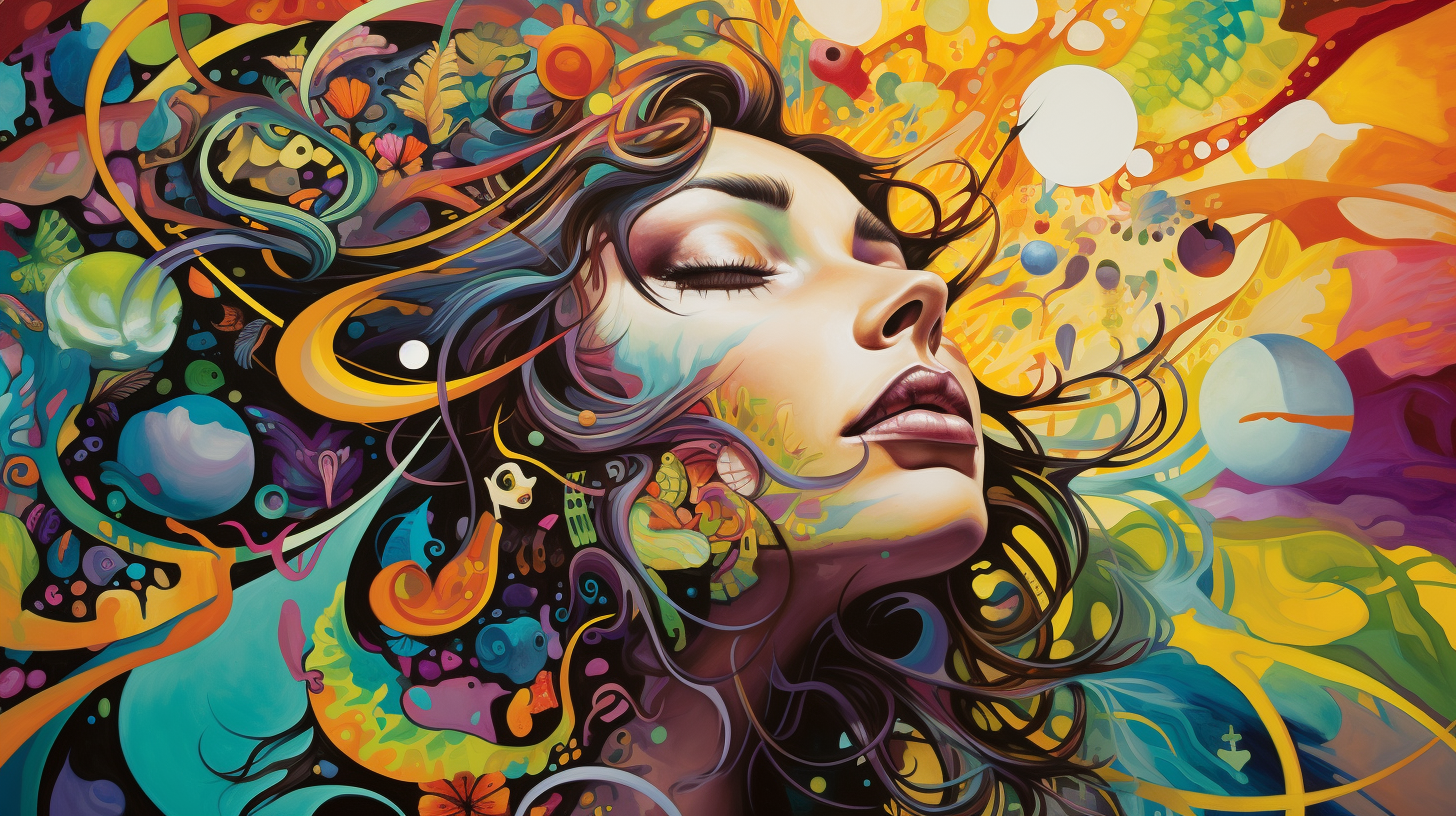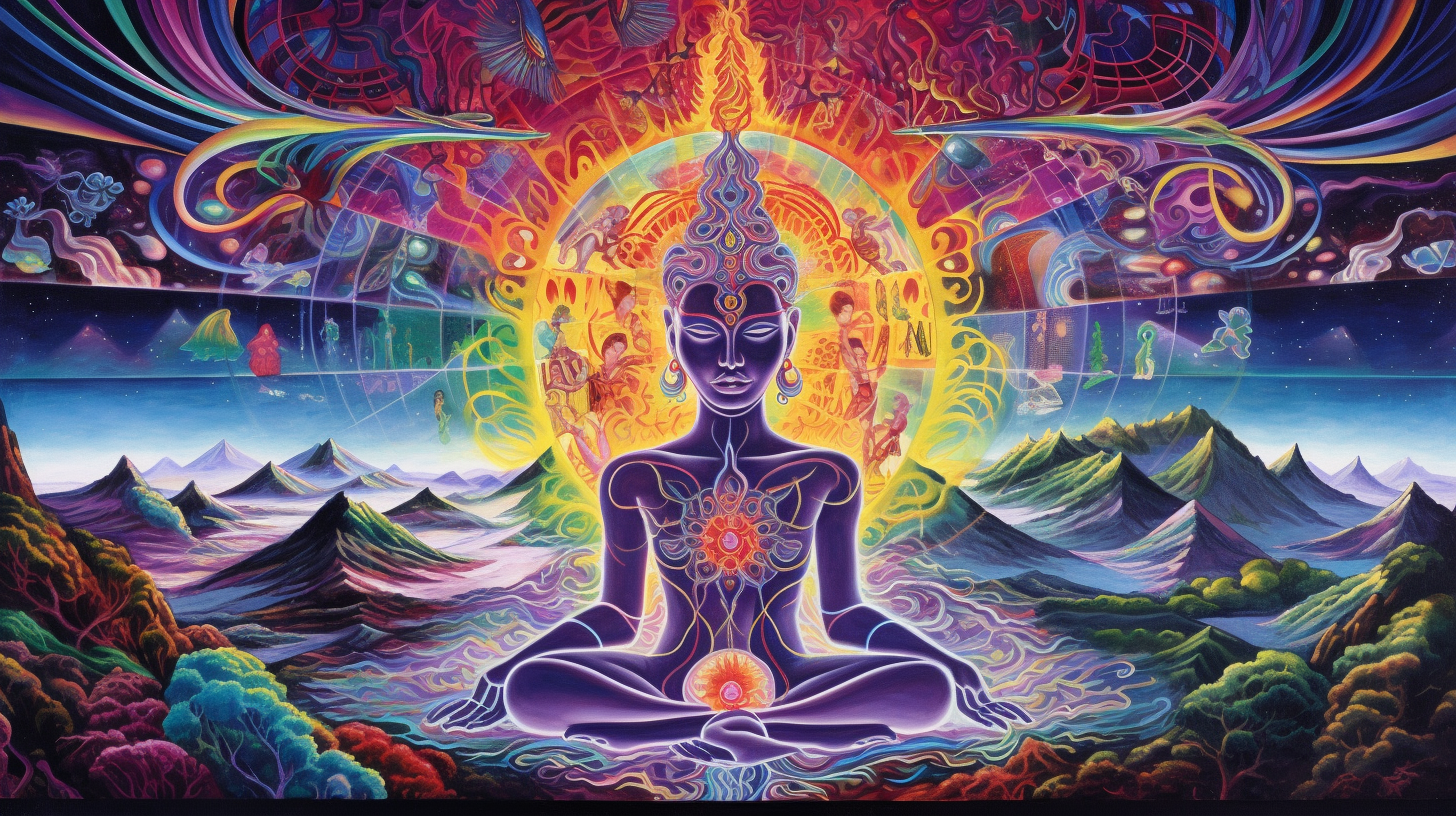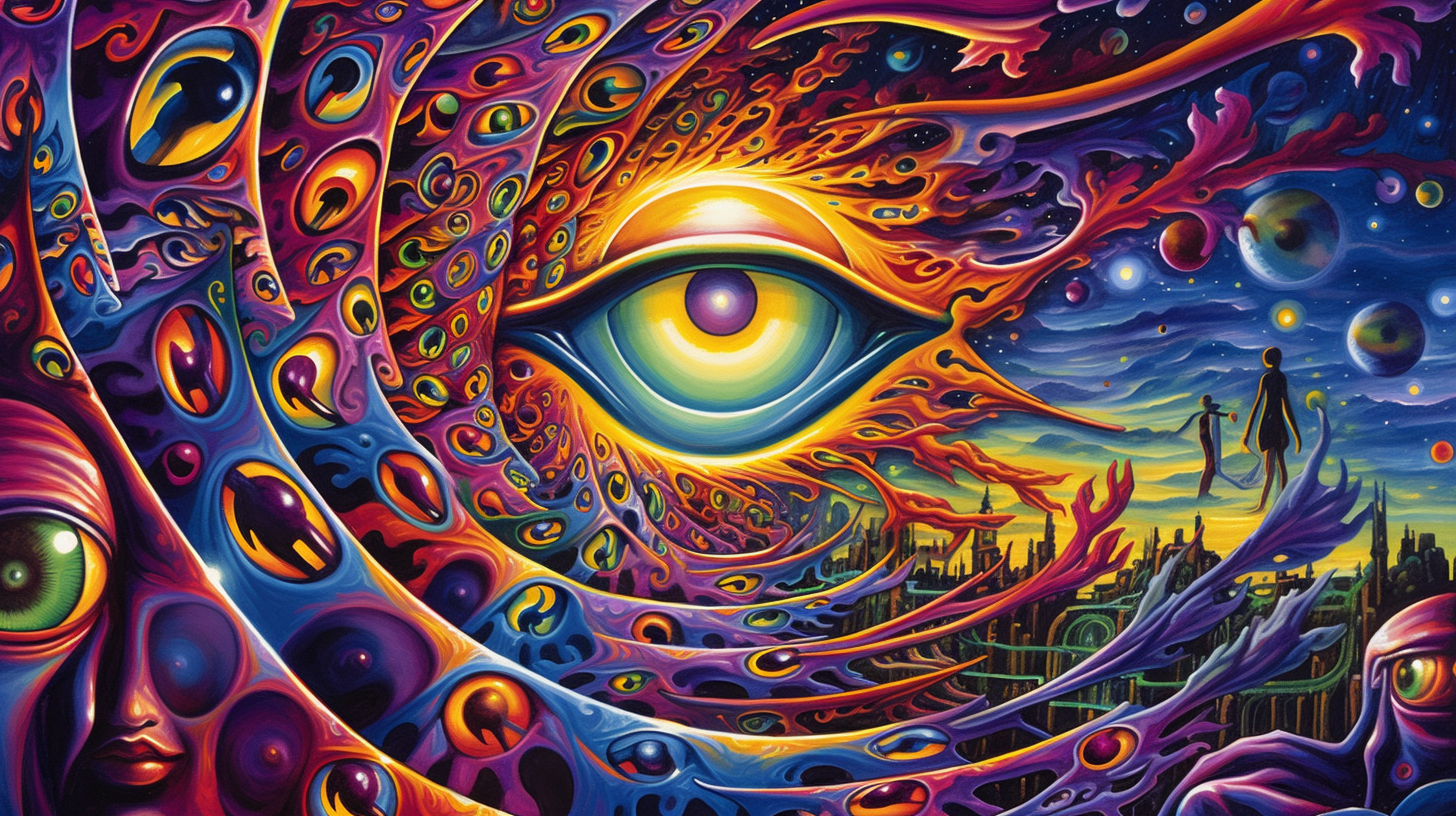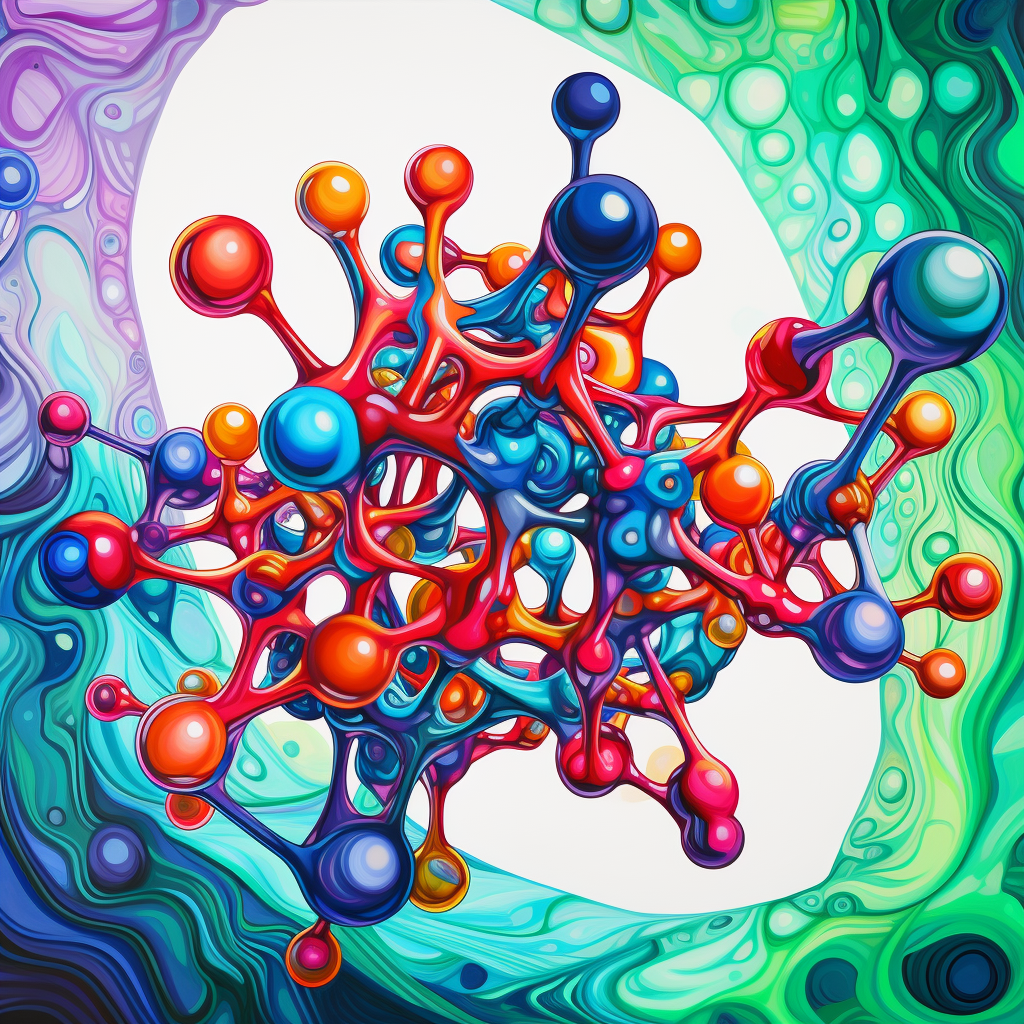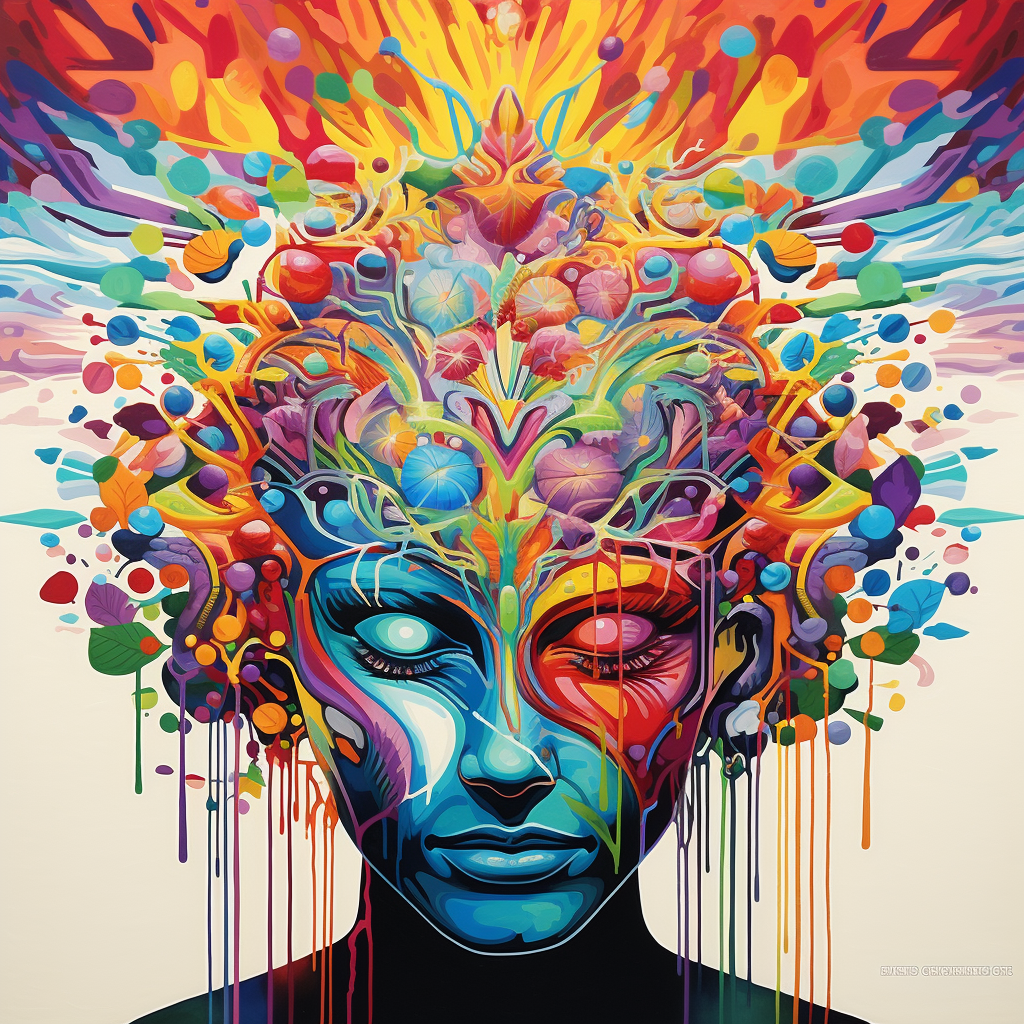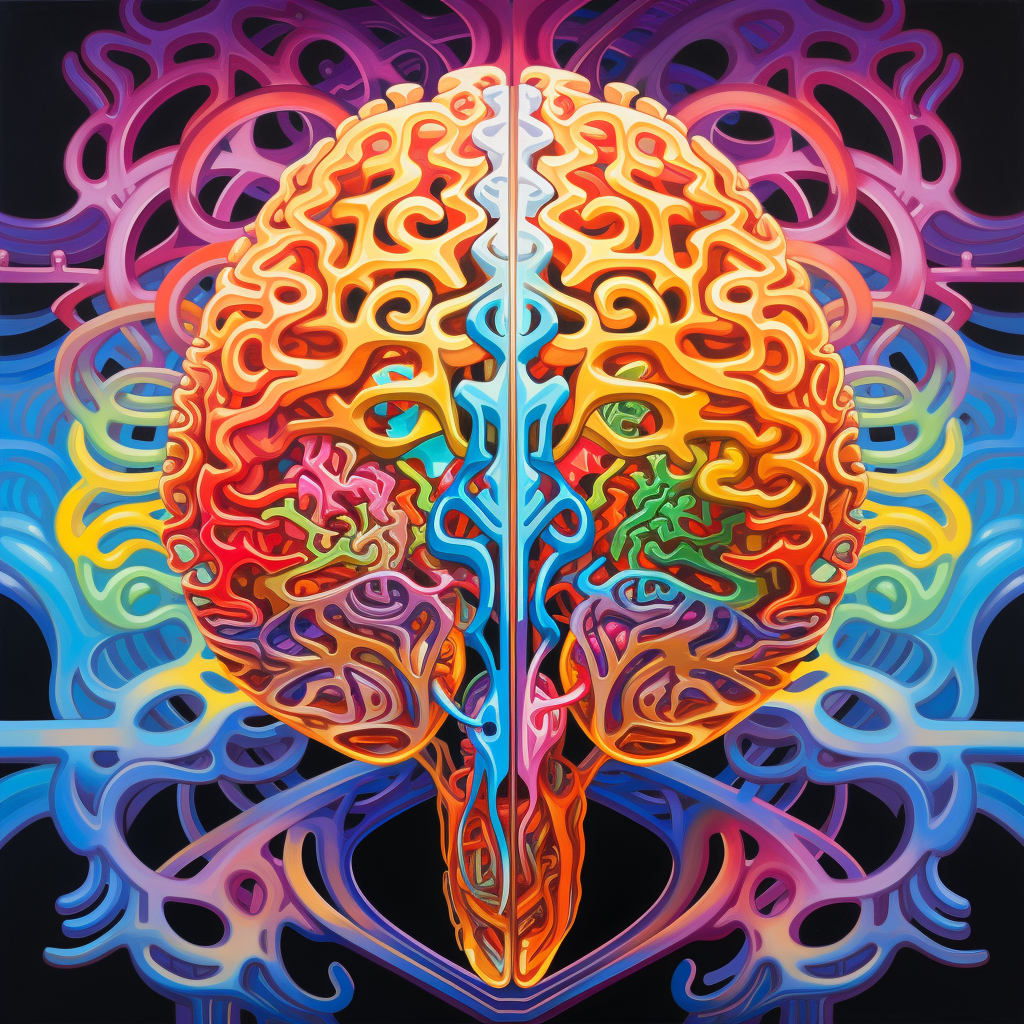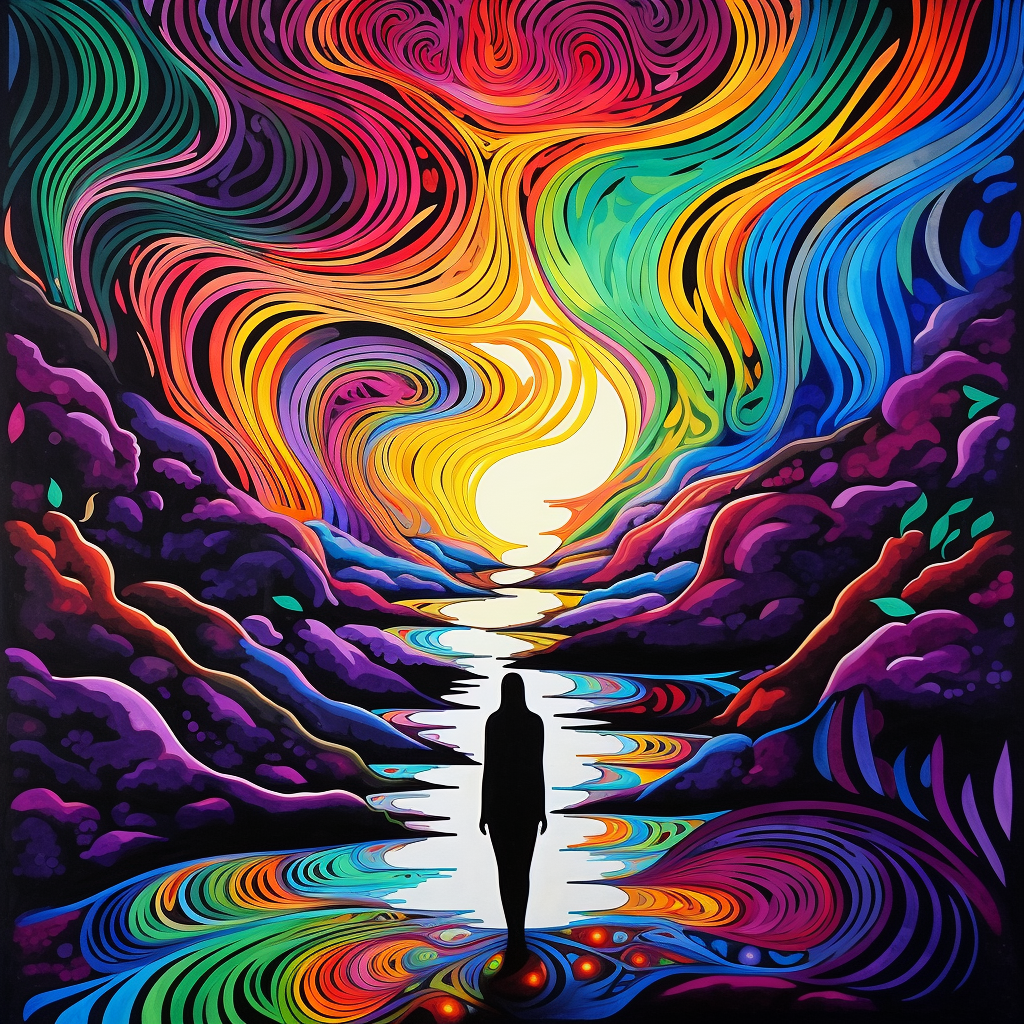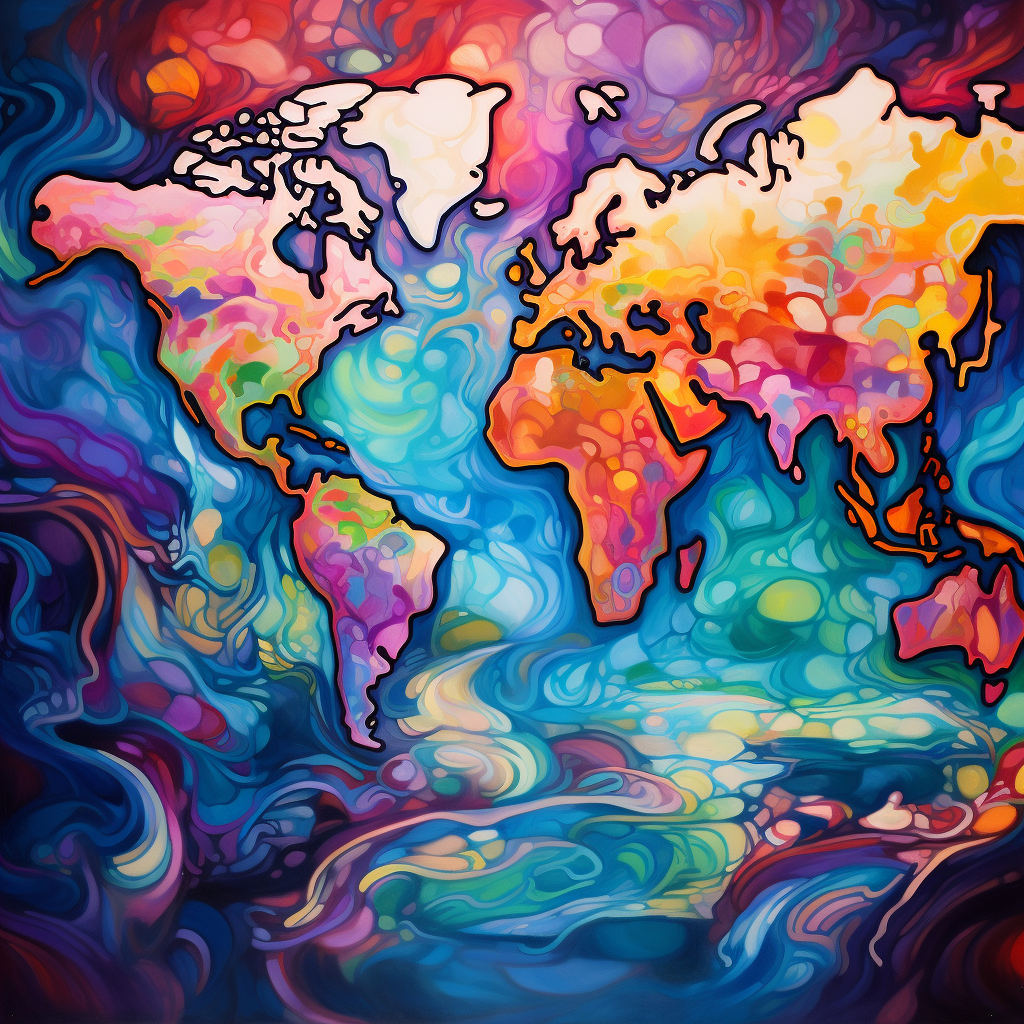We're in Beta 🙃
History and Social Significance
A Brief History of LSD
LSD, commonly referred to as “acid,” was first synthesized in 1938 by Swiss chemist Albert Hofmann while he was working at Sandoz Laboratories in Basel, Switzerland. However, its psychedelic properties weren’t discovered until five years later in 1943 when Hofmann accidentally ingested a small amount and experienced its profound effects.
In the 1950s and '60s, the substance's popularity soared amidst the counterculture movement, associated with anti-establishment ideologies and a quest for expanded consciousness. It was also during this time that LSD entered the realm of psychotherapy with therapists exploring its potential to treat a range of mental health issues including anxiety, depression, and PTSD.
However, by the late 1960s, concerns about its safety and ties to anti-establishment ideologies led to its criminalization in many countries, including the US, in 1968, stalling research into its therapeutic benefits for decades.
Modern Applications
In recent years, there has been a resurgence of interest in this potent psychedelic, particularly within the scientific and medical communities, exploring its potential therapeutic applications. Numerous studies and clinical trials are now investigating its efficacy in treating various mental health disorders, its potential to foster creativity, and its profound ability to alter consciousness.
This modern renaissance is slowly reshaping the narrative around LSD, moving towards a more balanced understanding of its risks and benefits, and its place in medicine and society. As regulatory frameworks evolve, there's hope that the integration of this psychedelic into mainstream medical practices could potentially revolutionize treatment methodologies for numerous mental health conditions.
This shift in perspective demonstrates a growing recognition of LSD's potential beyond its historical association with counterculture, as it begins to carve a new identity within modern therapeutic and scientific paradigms.
The Chemistry of LSD
 LSD is a synthetic molecule derived from lysergic acid, a compound found in ergot, a fungus that grows on rye and other grains. It belongs to the ergoline family, which explains its potent psychedelic properties. Despite its complex structure, LSD is colorless, odorless, and slightly bitter in taste.
LSD is a synthetic molecule derived from lysergic acid, a compound found in ergot, a fungus that grows on rye and other grains. It belongs to the ergoline family, which explains its potent psychedelic properties. Despite its complex structure, LSD is colorless, odorless, and slightly bitter in taste.
Structurally, LSD possesses a core indole structure, along with a diethylamide functional group attached to the nitrogen atom, distinguishing it from other ergolines and contributing to its unique pharmacological effects. The specific arrangement of atoms within the LSD molecule facilitates its interaction with serotonin receptors in the brain, particularly the 5-HT2A receptor.
LSD's chemical configuration enables its strong interaction with neurotransmitter systems, leading to its characteristic effects on mood, perception, and consciousness, marking it as a powerful psychedelic.
How LSD Affects Your Brain
Once ingested, LSD rapidly absorbs into the bloodstream and travels to the brain where it primarily interacts with serotonin receptors, specifically the 5-HT2A receptor. Serotonin is a neurotransmitter crucial for many physiological and behavioral functions including mood regulation, appetite, sleep, memory, and learning.
The interaction between the psychedelic substance and serotonin receptors significantly alters normal neurotransmission, which in turn impacts various cognitive and perceptual processes. Here are some key ways it affects the brain:
Serotonin Receptor Agonism: LSD acts as an agonist at the serotonin receptors, meaning it binds to these receptors and activates them, mimicking the action of serotonin. This agonistic action is primarily responsible for its mood-altering effects.
Default Mode Network (DMN) Disruption: This psychedelic has been found to temporarily decrease the connectivity within the brain's Default Mode Network (DMN), a network associated with self-referential thoughts and the ego. This disruption often results in ego dissolution, a common experience during a psychedelic trip where individuals lose the sense of a separate self (Carhart-Harris et al., 2016).
Increased Brain Connectivity: While the connectivity within the DMN decreases, the overall connectivity between different brain regions increases. This increased communication across diverse brain networks fosters the vivid imagination, altered perception, and sense of unity with the environment often reported during LSD experiences.
Enhanced Plasticity: This psychedelic may promote neuroplasticity, a process that enhances the brain's ability to adapt and reorganize neural pathways. This enhanced plasticity might explain the long-lasting changes in perception and cognition some individuals report.
Visual Processing Alterations: LSD affects the brain's visual processing centers, which can lead to hallucinations and altered visual perceptions. The substance can induce a blend of sensory experiences known as synesthesia, where, for example, one might see sounds or hear colors.
The substance's effects on the brain are complex and still not fully understood. However, the resurgence in psychedelic research is slowly unraveling the intricate ways in which this, and other psychedelics, interact with the brain, paving the way for potential therapeutic applications.
The LSD Experience
The experience induced by LSD, often referred to as a "trip," is known for its profound alterations in consciousness, perception, and mood. Each trip can be vastly different depending on the individual, the dose taken, and the environment in which it's consumed. Here are some common aspects of the experience:
Perceptual Changes: Individuals often report intensified sensations, brighter colors, sharper sounds, and enhanced tactile sensations. Visual hallucinations or distortions like trails, color shifts, and geometric patterns are common.
Ego Dissolution: A hallmark of high-dose experiences is the dissolution of ego, where the boundary between self and other dissolves, leading to a sense of oneness or unity with the surroundings.
Altered Sense of Time: Time may seem to slow down, speed up, or lose its meaning entirely, creating a feeling of timelessness.
Enhanced Emotions: Emotions can be heightened and fluctuate rapidly between euphoria, love, anxiety, or fear.
Mystical Experiences: Some individuals encounter what they describe as spiritual or mystical experiences, which can be life-changing and instill a sense of interconnectedness and wonder.
Increased Insight: This psychedelic may foster a deep introspective state where individuals can have revelations or insights about their lives, relationships, or the nature of reality.
Synesthesia: This phenomenon, where senses cross over, such as seeing sounds or hearing colors, can occur, creating a unique sensory experience.
Cognitive Shifts: Changes in thought processes, open-mindedness, and novel ways of thinking are often reported.
The LSD experience is unique yet often cherished for its ability to cultivate a profound sense of connection with oneself, others, and the surrounding world, unraveling a tapestry of consciousness that blends the mystical with the mundane.
The LSD experience can be described as...
Taking LSD was a profound experience, one of the most important things in my life. It reinforced my sense of what was important—creating great things instead of making money, putting things back into the stream of history and of human consciousness as much as I could.
Before, I had believed there was only one reality, the reality of everyday life. Just one true reality and the rest was imagination and was not real. But under the influence of LSD, I entered into realities which were as real and even more real than the one of everyday.
LSD lets you in on something. When you're tripping, the idea of race disappears; the idea of sex disappears; you don't even know what species you are sometimes. And I don't know of anybody who hasn't come back from that being more humane, more thoughtful, more understanding.
The LSD experience usually changes forever the worldview and basic life-orientation of all who experience it.
The function of the brain is to reduce all the available information and lock us into a limited experience of the world. LSD frees us from this restriction and opens us to a much larger experience.
I am certain that the LSD experience has helped me very much. I find myself with a heightened color perception and an appreciation of beauty almost destroyed by my years of depression… The sensation that the partition between ‘here’ and ‘there’ has become very thin is constantly with me.
Can LSD Help with Severe Mental Health Conditions?
Research exploring the therapeutic potential of LSD is in a resurgence, and preliminary findings suggest it may hold promise for treating various mental health conditions.Depression
LSD's ability to temporarily alter brain networks and promote neuroplasticity may provide relief from depressive symptoms. It's thought that the drug can help individuals break free from rigid, negative thought patterns associated with depression.
Anxiety
Studies have explored this substance's effects on anxiety, especially in individuals with life-threatening illnesses. The substance may help alleviate anxiety by promoting a sense of unity and reducing fear of mortality.
Post-Traumatic Stress Disorder (PTSD)
The enhanced introspection and altered consciousness induced by this psychedelic might help individuals process traumatic memories in a new light, although more research is needed in this area.
Substance Abuse
Some research suggests that it could be a useful tool in addiction treatment, by fostering new perspectives and promoting behavior change.
Obsessive-Compulsive Disorder (OCD)
Although not as extensively studied, there's some evidence suggesting that it may help alleviate symptoms of OCD by disrupting fixed thought patterns.
Microdosing: An Alternative Approach


Microdosing is the practice of taking sub-perceptual doses of psychoactive substances (typically 1/10th to 1/20th of a regular dose). The idea behind microdosing is to experience the cognitive and emotional benefits of a psychedelic without the intense hallucinogenic effects.
People who microdose LSD report a variety of positive effects including enhanced creativity, better mood, increased energy, and improved focus. Professionals in high-pressure industries and creative fields have particularly found favor with it.
Research on microdosing is still in its infancy, but early studies and anecdotal reports suggest potential benefits. Some individuals find microdosing LSD helps in managing symptoms of depression, anxiety, and ADHD, although scientific evidence is still emerging.
Microdosing LSD is a delicate practice requiring careful dosing to ensure the desired benefits without unwanted side effects. Even at microdoses, this psychedelic remains a powerful substance and should be approached with careful consideration about its legality and potential risks.
✨ Benefits + Effects of LSD ✨
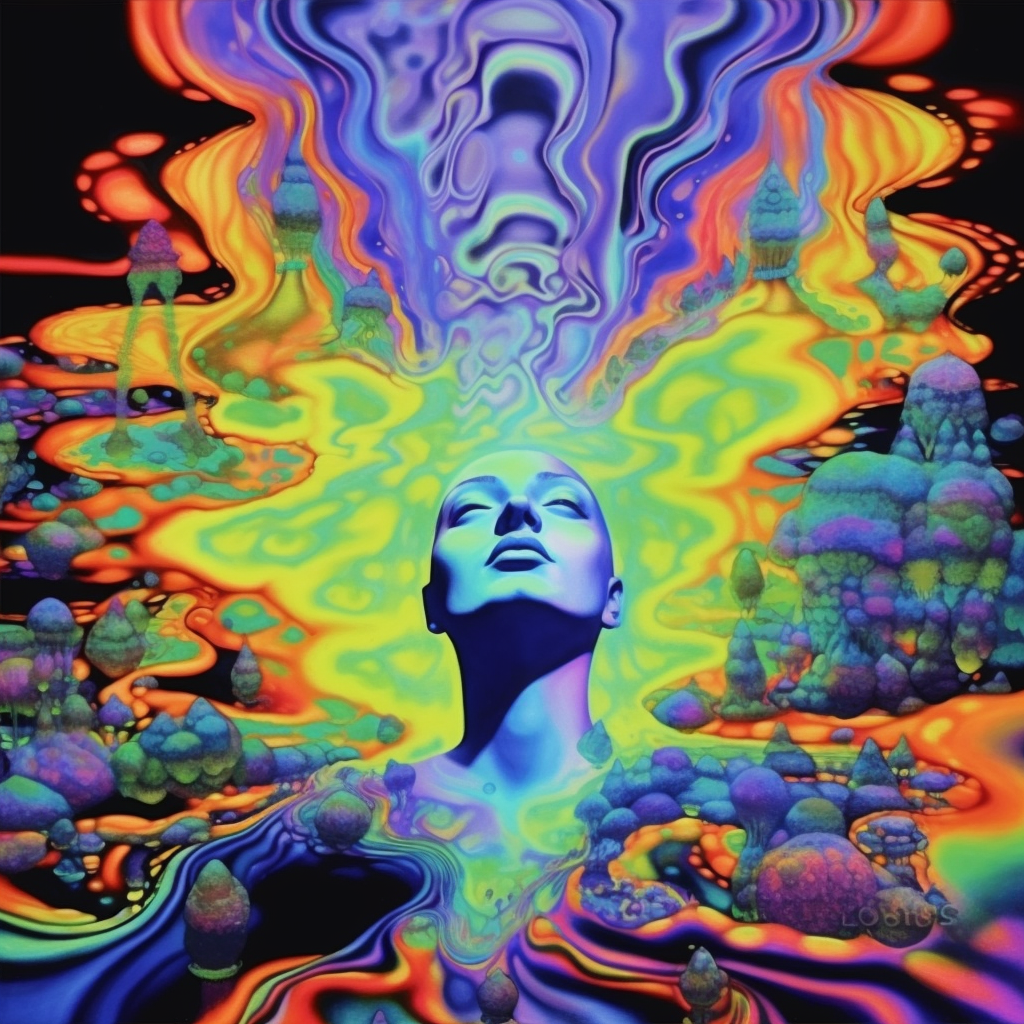

Ego
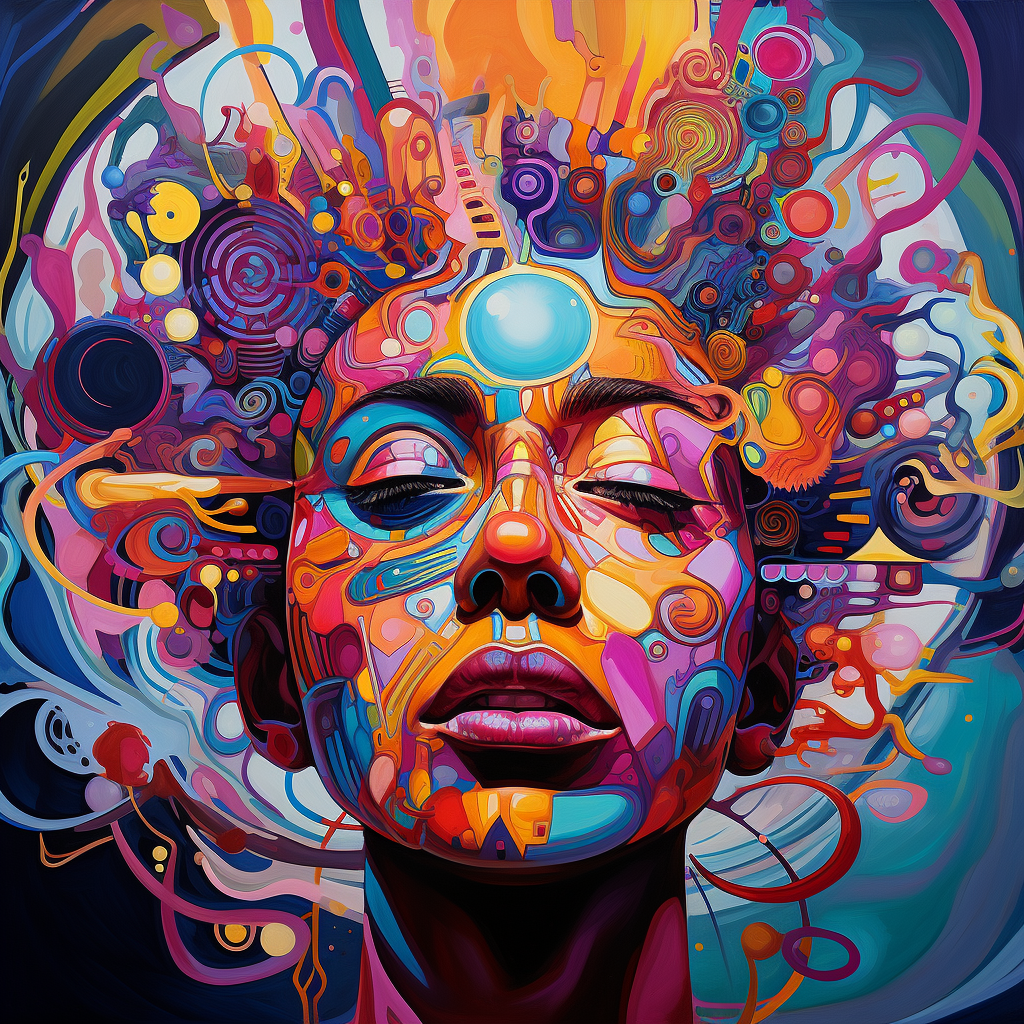

Altered


Enhanced


Heightened
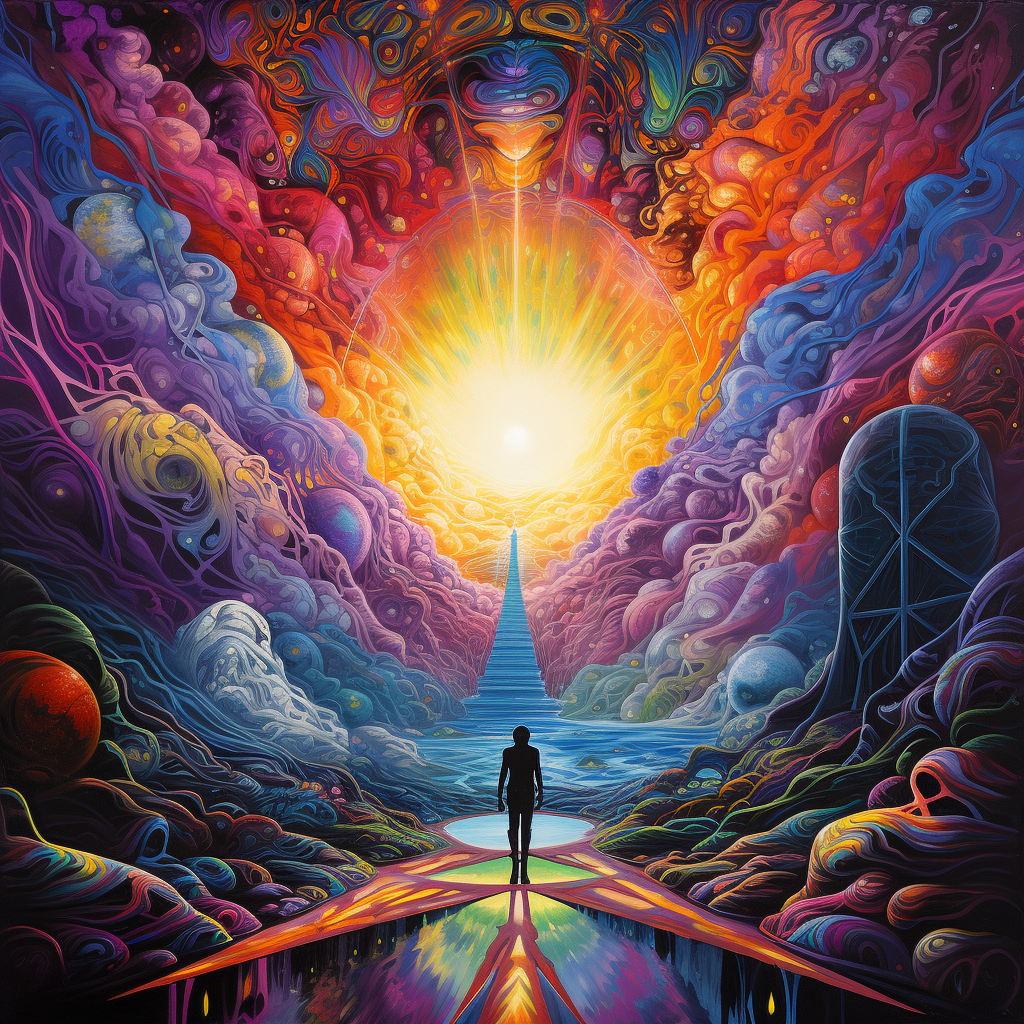

Mystical


Therapeutic
The Latest Scientific Research on LSD
Therapeutic Use of LSD in Psychiatry: A Systematic Review of Randomized-Controlled Clinical Trials
In the mid-20th century, researchers explored this psychedelic's effects on behavior, personality, and psychiatric conditions, including anxiety, depression, psychosomatic illnesses, and substance dependence. These early studies, though lacking modern scientific rigor, hinted at its potential psychiatric benefits.
Recent scholarly interest has reignited examination into the substance's clinical applications, focusing on controlled, randomized trials. This review scrutinizes such trials, where 567 individuals received LSD in doses from 20 to 800 micrograms. Findings across these diverse studies consistently indicate its promise in diminishing psychiatric symptoms, particularly in treating alcoholism.
Short-term patient improvements were widely reported, suggesting LSD's viability as a psychiatric treatment. The review underscores the importance of the therapeutic context and patient experiences in achieving favorable outcomes. Current evidence most robustly supports its efficacy in alcoholism therapy, positioning it as a candidate for broader psychiatric use.
Read the full study published in Frontiers of Psychiatry here.
The Effect Of Lysergic Acid Diethylamide (LSD) On Whole-Brain Functional And Effective Connectivity
A recent study published in Neuropsychopharmacology provides new insight into how this psychedelic influences the way different brain regions communicate. The findings suggest that LSD disrupts the brain’s gatekeeping process, leading to increased information flow and altered perception.
The study aimed to examine the neural mechanisms underlying this substance's effects on the whole brain by employing computational modeling and machine learning to analyze brain connectivity in 45 participants, under LSD and placebo conditions, using fMRI data.
The researchers found evidence that LSD resulted in widespread changes in brain connectivity in almost the entire brain. They observed stronger connectivity between regions that support a wide range of cognitive processes and behaviors, including sensory processing, decision-making, language production, and memory. Additionally, it was found to enhance connectivity in brain areas associated with thinking and cognitive functions.
In short, LSD increases communication between brain areas that usually don’t talk to each other much.
Can LSD trigger a bad trip?
LSD, known for unlocking doors to the mind, can also usher in negative or "bad trips," influenced by factors like dosage, mental state and setting. An excessive dose, stressful environment or a troubled emotional state can turn the experience from enlightening to frightening.
Individual reactions can vary widely, with newcomers to the substance or those with a sensitivity to hallucinogens being more prone to experiencing anxiety, paranoia, or panic. Moreover, combining LSD with other substances can trigger unpredictable and often adverse effects, heightening the likelihood of a negative experience.
The aftermath
The aftermath of an LSD trip can be mentally exhausting, manifesting as anxiety or depression, particularly if the trip was challenging or unsettling.
For individuals with unresolved trauma or mental health conditions, this potent psychedelic could trigger distressing memories or emotions. Ensuring a conducive environment and accurate dosing are crucial in mitigating the risks associated with this or any psychedelic.
Other Possible Side Effects
- Nausea
- Dizziness or lightheadedness
- Increased heart rate and blood pressure
- Sweating or chills
- Blurred vision
- Insomnia
- Dry mouth
- Tremors
- Loss of appetite
Contraindications for LSD Use
The use of LSD is associated with several contraindications that individuals should be aware of to ensure safety. Here are some crucial factors to consider:
- Mental Health Conditions: Individuals with a history of mental health issues, particularly psychotic disorders such as schizophrenia or severe bipolar disorder, should avoid LSD. The substance could exacerbate symptoms or trigger a psychotic episode.
- Heart Conditions: This substance can cause an increase in heart rate and blood pressure, making it potentially dangerous for individuals with pre-existing heart conditions.
- Medication Interactions: This substance may interact adversely with various medications, including antidepressants, antipsychotics, and certain heart medications. Consult with a healthcare professional if you're on any medication before considering the use of LSD.
- Epilepsy: The potential of LSD to trigger seizures or interfere with epilepsy medications makes it a risky choice for individuals with epilepsy.
- Pregnancy and Breastfeeding: There's a lack of definitive research on the effects of LSD on fetal development, but it's advisable for pregnant or breastfeeding women to avoid it to mitigate any potential risks.
- Lack of Proper Setting and Guidance: A conducive setting and knowledgeable guidance are crucial to navigate the experience safely, especially for those with conditions or medications that might interact adversely with this psychedelic.
- Personal Readiness: Considering one's emotional readiness and intent is essential. LSD isn't a "quick fix" and requires a supportive environment for a safe and enriching experience.
The Legal Status of LSD
Federal Status in the United States
On the federal level, LSD remains a Schedule I controlled substance by the DEA in the United States. This classification denotes that the substance has a high potential for abuse, no accepted medical use in treatment, and a lack of accepted safety for use under medical supervision.
The possession, distribution, or manufacture of LSD is illegal under federal law, with severe penalties for violations.
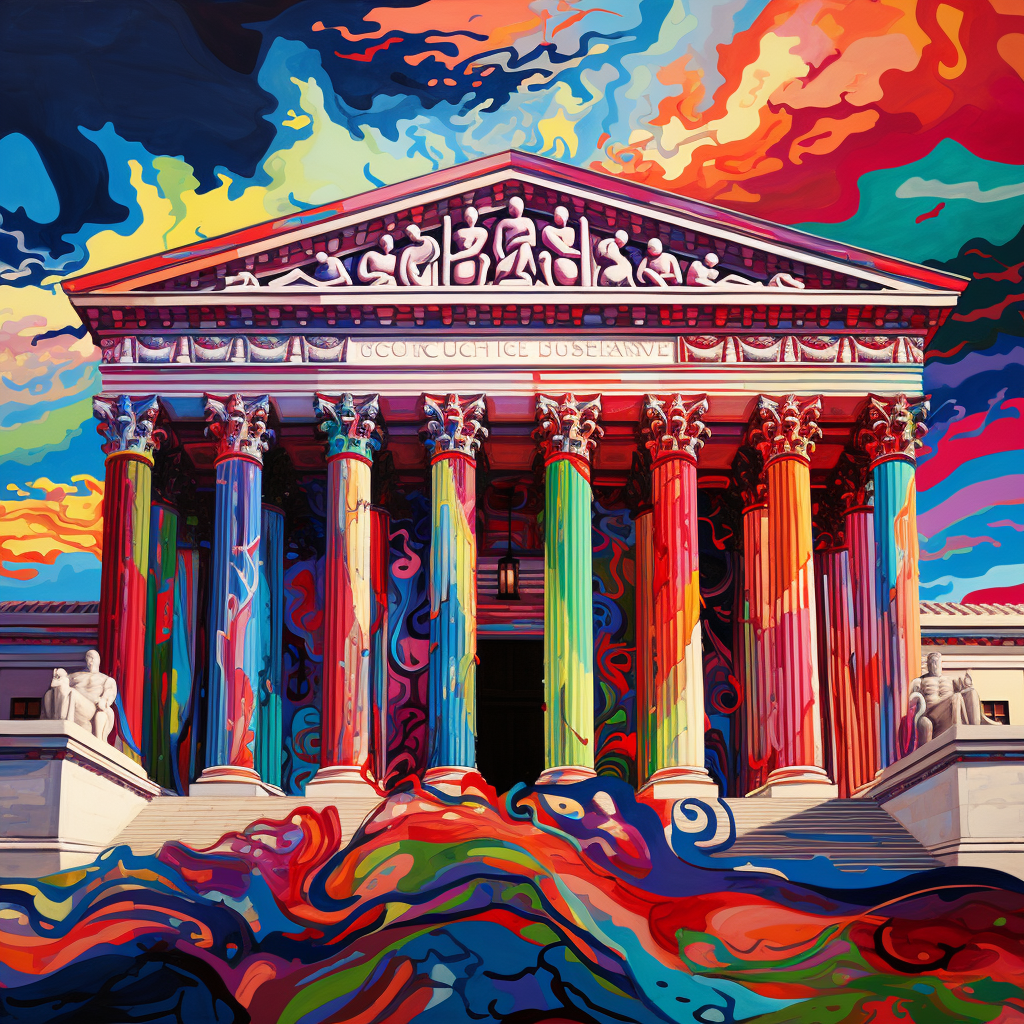

International Legal Status
The legal status of LSD varies significantly from country to country, reflecting a wide range of attitudes towards this potent psychedelic:
- United Kingdom: LSD is classified as a Class A drug, making its possession, distribution, or manufacture illegal.
- Canada: LSD is a Schedule III controlled substance, making it illegal to produce, distribute, or possess.
- Australia: LSD is classified as a Schedule 9 prohibited substance, indicating it is illegal to possess, distribute, or manufacture.
- Germany: The possession, production, and distribution of LSD are illegal, as it is classified under the Narcotics Act.
- Netherlands: Despite a more liberal attitude towards some psychedelics, LSD is classified as a List I substance, making it illegal.
- Brazil: LSD is an illegal substance, and its possession, distribution, or manufacture can lead to significant legal penalties.

